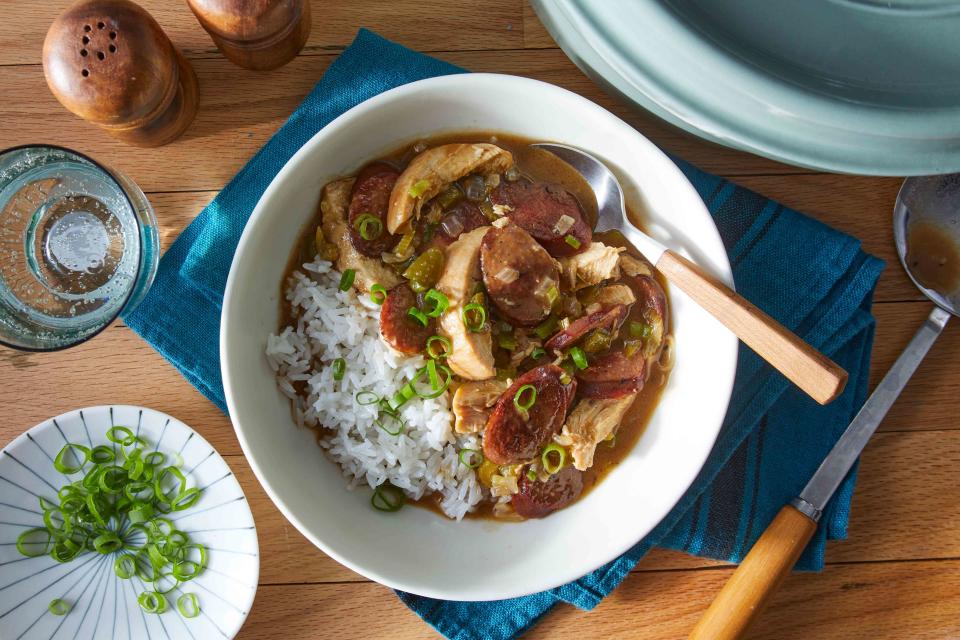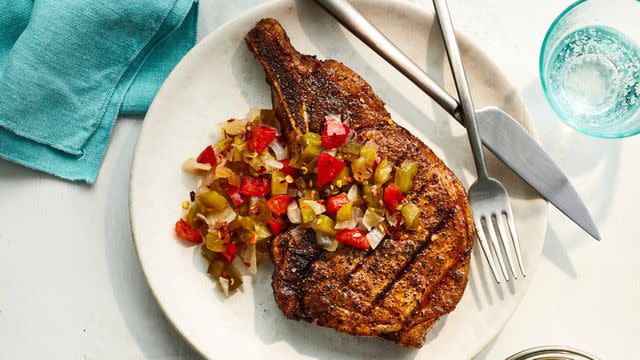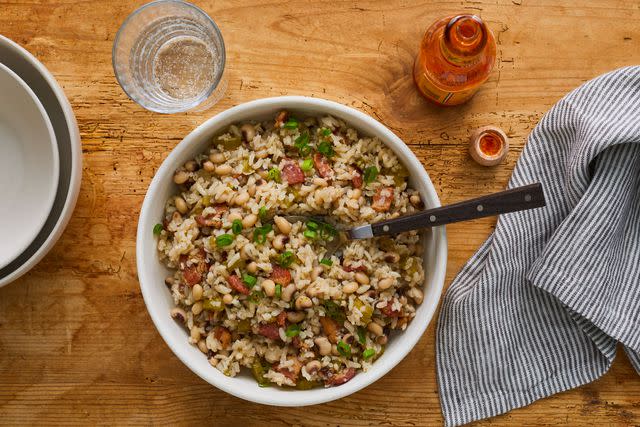Why Do Southern Dishes Have Unusual Names?
From hush puppies to Hoppin’ John, learn the history behind these classic dishes' name.

Dotdash Meredith
It’s easy to discern from most recipe names the type of dish you’ll enjoy—for example, cornbread, beef stew, or tomato pie. But Southerners are much more inventive than that, with lyrical recipe names that reference the cultures, stories, and people that created these dishes.
If you ever wondered where the names of popular dishes like hush puppies, Hoppin’ John, and burgoo came from, read on. We spoke with chefs and food historians to decode the origins of these everyday Southern dishes' names.
Hush Puppies
Deep-fried spoonfuls of a cornmeal-based batter, hush puppies are golden brown fritters often served as a side dish . Crunchy on the outside and fluffy on the inside, you’ll see both sweet (made with a bit of sugar) and savory (with some grated onion) versions of this dish. Enjoyed as a starter, sometimes for free at seafood places and barbecue joints, don’t hesitate to order a few if you see them on a menu.
While we savor the snack today, a century ago, this dish might have been table scraps to keep the pups quiet. Chef and owner of Jack Rose, Bayou Bar, and Hot Tin in New Orleans (and multiple others) Brian Landry explained, "They were the little morsels that were fed to begging pups to keep them quiet. We say that hush puppy got used because shut the #$%@ up was too crass."
Food historian Robin Caldwell argues that the dish can be traced to Indigenous cuisine. She said, "The recipe itself is really old, and the derivations of the recipe can go back to Native people cooking balls of ground maize in Texas and Mexico."

Chow Chow
Also known as Piccalilli and Indian Pickle, the sweet and briny relish is made of the summer’s bounty of veggies, often including green tomatoes, cabbage, onions, bell peppers, and spices like mustard and celery seeds. Open a Southern Grandma's pantry, and you’ll likely find a few jars of the condiment put up and ready to be served with barbecue, hot dogs, or more traditionally, soup beans.
The origin of the name likely comes from one of the main ingredients, cabbage. Landry explained, “In Louisiana, many of our recipes come from the Acadian people from Nova Scotia who were expelled from Canada and later settled in Louisiana. While the origin of the word is debated, we believe in Louisiana that the term came from the French word for cabbage, chou."
Burgoo
A hearty, endlessly customizable stew, traditional burgoo often contains game meat, pork, root vegetables like potatoes and cabbage, and beans. Give yourself an afternoon to let this dish simmer on the stove (or in the slow cooker) to allow the flavors to develop. Often made in large quantities, the original was said to serve Frankfort’s Buffalo Trace distillery, so be ready to freeze extras or bring this main dish over to your next church function.
"It's the Kentucky version of gumbo," Landry said. "It has been made with all kinds of meats over the years but was often a communal endeavor where the bounty from the hunt was shared. Many suggest it is from the French ragout (pronounced ra-GOO), meaning stew."
Gumbo
While slimy okra gives many modern eaters the yuck, the veggie serves an essential purpose in this Louisiana stew: as a thickener.
Landry explains, "The name gumbo comes from a West African word for okra, ki ngombo, as okra was often used in the stew as a thickening agent. This demonstrates how African culinary practices were incorporated into the New World."
While there are two schools of thought when preparing gumbo, the well-spiced stew typically contains a protein, the Holy Trinity of vegetables (onions, bell peppers, and celery), a roux to thicken, and is served over rice.
Whether you prefer a Creole version with shellfish or a Cajun version with andouille and chicken, there’s no wrong answer when it comes to gumbo. With influences and ingredients from many cultures, including African, French, Spanish, German, and Indigenous peoples, gumbo reflects the many people who made Louisiana their home.

Stacy K. Allen, Food Stylist: Ruth Blackburn, Prop Stylist: Christina Daley
Hoppin' John
Leave it to Charlestonians to take a simple dish like rice and beans and give it a fabulously creative name. Made with black-eyed peas, rice, and bacon, Hoppin’ John is often served on New Year's Eve to bring good luck.
Brought over with enslaved Africans in the 19th century, the dish and technique likely originate from the Senegalese dish thiebou niebe. Because of the African roots, the name likely comes from the community.
Robin Caldwell explained, "The origin of the name is Gullah. [The Gullah are the descendants of enslaved Africans who lived in the Low Country in South Carolina.] I believe the Gullah named the dish based on a Charleston street vendor. It was eaten similarly in West Africa, the Caribbean, and other places in the African diaspora. The name, however, is most likely unique to the Gullah."
Others suggest the name comes from the French; as Landry suggested, "It's theorized the name may derive from an old, Southern mispronunciation of the French term for dried peas, pois à pigeon."
For more Southern Living news, make sure to sign up for our newsletter!
Read the original article on Southern Living.

